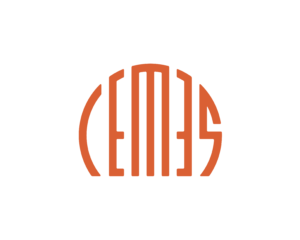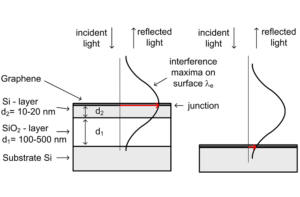Research project selected under the 2021 call for proposals

Principal Investigator : Wolfgang BACSA
Involved Teams :
- CEMES / Multi-Scale and Multi-functional Materials, M3
- CEMES / Atom-Tech & Procédés, ATP
- CEMES / Materials and devices for Electronics and Magnetism, MEM
Type of project : Disruptive Project
Date (start/end) : 2021 – 2024

Right side: G/Si solar cell without SiO2 layer. The optical field at the interface is considerably (4-5 times) smaller.
We investigate and demonstrate interference enhancement in a nano-photonic graphene/Silicon-on-Insulator (SOI) Schottky junction solar cell. Graphene/silicon Schottky junction solar cells are promising due to their simple manufacturing process, high power conversion efficiency and low cost. Graphene serves both as a transparent electrode and as an active layer for the separation of electrons and holes. We propose here a G/Si/SiO2/reflector solar cell where both the thicknesses of the Si and a SiO2 layer are optimized so that an interference maximum (optical surface standing wave) is produced near a reflecting surface. Using interference enhancement, we expect to improve power conversion efficiency by a factor of two compared to a simple graphene/Si Schottky junction solar cell. Our methodology involves mathematical modeling, solar cell fabrication and state of the art structural and transport measurements. In addition to scientific breakthrough, the project will also be a platform to train master student interns in physics and chemistry.
The first and foremost expected impact is a fundamental understanding of the effect of interference effects on solar cell efficiency. If successful, we will try to implement our substrate in state-of-the-art G/Si solar cells (with doped graphene, ARCs etc) or extend our results to other 2D systems with a large application potential.
